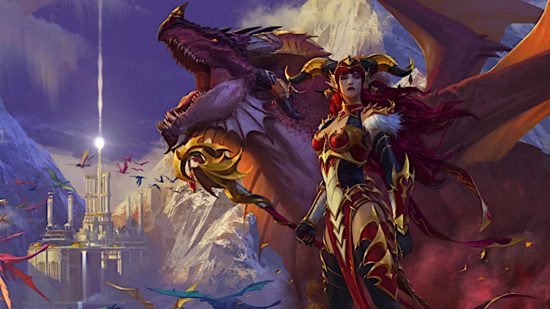Blizzard offered a deep look at the World of Warcraft Dragonflight Priest talents in an extensive new blog post, highlighting changes to the three Priest specializations. While much of the class talent system remains the same as previous expansions in the MMO game, there are a few significant differences – the biggest one being you’ll have two talent trees to spend your points in, a class tree and a specialization tree. These blur the boundaries of traditional specializations and let you blend elements outside your own chosen spec to create something unique.
“Some of our biggest goals in a class and talent revamp are to increase player agency over your character’s progression and build, provide meaningful rewards while leveling, and reinforce your character’s connection to both their class and their spec,” Blizzard said in the post.
The Priest talent tree, and other class trees, will feature more class-specific skills in Dragonflight, but Blizzard said the important ones – the ones they expect almost every player to use – will either be:
- Learned from levels 1-10
- Awarded automatically
- Placed at the top of the skill tree to be unlocked first
That way, you’re not spending customization options on foundational skills. Starting at level 10, you earn a class point and a specialization point on an alternating basis, so at level 10, you get a class point, and at level 11, you get a specialization point. You can’t hoard your points and expect to progress, either. Blizzard said certain rows on the talent trees only unlock after you’ve used a set number of points, and some nodes have multiple skills to choose from.
World of Warcraft Dragonflight Priest Talents
As for the Priest’s talents themselves, they’re a varied lot divided into five categories. These are:
- Basic abilities
- Class abilities
- Discipline Talents
- Holy Talents
- Shadow Talents
The basic and class abilities are pretty much what you’d expect, a buffet of talents ranging from offense and healing to general support and more. The specialization trees are, as always, where things get interesting.
Discipline Priests are basically war clerics, using skills such as Penance and Power Ward to deal damage of various types, with supplementary talents that bolster these more fundamental abilities.
Holy Priests are exceptional healers, restoring health to single allies and the entire party across a broad area with the likes of Prayer Circle and Divine Hymn. They’re a bit lacking on offense, so if you plan on playing as a Holy Priest, you’ll be relying on your class abilities quite frequently, that is if you don’t use other specialist talents as well.
Finally is the Shadow Priest, which Blizzard said won’t be using Dark Thoughts anymore. The team believed it relied too much on Mind Flay and cut down on other viable build options.
Mind Flay is still there as a base talent, but early impressions are that Blizzard traded Dark Thoughts for Vampiric Touch, which features pretty heavily in every row on the Shadow talent tree up through row five. From there, your options branch out to include talents such as Shadow Crash, which deals heavy shadow damage, to the stat-buffing Ancient Madness, and the healing skill Mental Fortitude.
You can check out the full list of talents on Blizzard’s Priest overview page.
If you’re keen on playing some classic WoW before Dragonflight releases, our guide for leveling up fast in vanilla World of Warcraft is your best friend. Or if you’re after something a bit different, there’s an ongoing project moving World of Warcraft into the Dungeons and Dragons universe.
